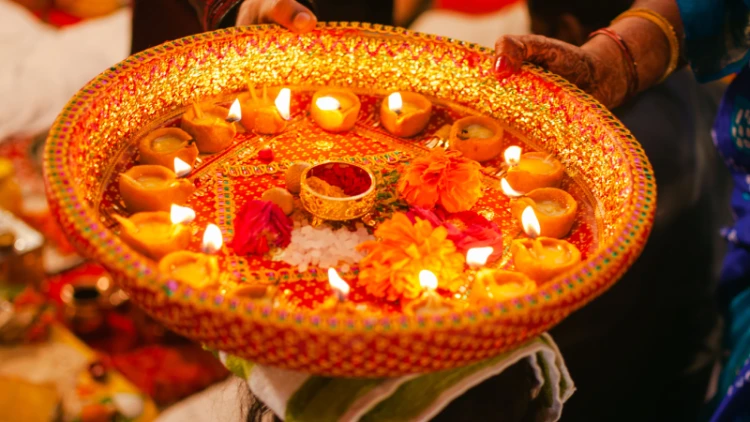Varanasi, the spiritual heart of India, is a city that offers a unique blend of history, culture, and spirituality. Whether you’re planning to explore its ancient temples, witness the mesmerizing Ganga Aarti, or simply soak in the city’s vibrant energy, choosing the best time to visit Varanasi is crucial for a memorable experience. In this guide, we’ll break down the weather, festivals, and travel tips to help you plan your trip perfectly.
Why Timing Matters in Varanasi
Varanasi is a year-round destination, but the experience can vary greatly depending on the season. From scorching summers to chilly winters and unpredictable monsoons, each season has its own charm and challenges. Additionally, the city’s festivals add a layer of cultural richness that can make your visit even more special.
Understanding Varanasi’s Weather
Winter (October to March)
Winter is the best time to visit Varanasi. The weather is pleasant, with daytime temperatures ranging from 10°C to 25°C. The cool breeze and clear skies make it ideal for exploring the city’s ghats, temples, and markets.
Why Visit in Winter?
- Perfect weather for sightseeing and outdoor activities.
- Festivals like Dev Deepawali and Makar Sankranti add to the city’s charm.
Tips for Travelers:
- Carry light woolens for the evenings, as it can get chilly.
- Book accommodations in advance, as this is the peak tourist season.
Summer (April to June)
Summers in Varanasi can be intense, with temperatures soaring up to 45°C. The heat can make outdoor activities challenging, but early mornings and late evenings are still manageable.
Why Visit in Summer?
- Fewer crowds mean you can explore popular sites without the rush.
- Early mornings by the Ganges are serene and peaceful.
Tips for Travelers:
- Stay hydrated and carry a water bottle at all times.
- Plan your sightseeing for early mornings or late afternoons.
- Wear light, breathable clothing and use sunscreen.
Monsoon (July to September)
The monsoon season brings relief from the summer heat, but it also comes with heavy rainfall and humidity. While the city looks lush and beautiful, the rains can disrupt travel plans.
Why Visit in Monsoon?
- The ghats and temples look stunning in the rain.
- The weather is cooler compared to summer.
Tips for Travelers:
- Carry an umbrella or raincoat to stay dry.
- Be prepared for occasional flooding in low-lying areas.
- Check weather forecasts before planning outdoor activities.
Festivals in Varanasi: Plan Your Visit Around These Events
Varanasi is known for its vibrant festivals, which offer a glimpse into the city’s rich cultural and spiritual heritage. Here are some festivals you shouldn’t miss:
Dev Deepawali (November)
Dev Deepawali, also known as the “Festival of Lights of the Gods,” is celebrated 15 days after Diwali. The ghats are decorated with thousands of earthen lamps, and the Ganga Aarti is even more spectacular during this time.
Why Attend?
- The ghats look magical with the glow of countless lamps.
- It’s a unique cultural experience that you won’t find anywhere else.
Maha Shivratri (February/March)
Maha Shivratri is one of the most important festivals in Varanasi, dedicated to Lord Shiva. Devotees flock to the Kashi Vishwanath Temple to offer prayers and seek blessings.
Why Attend?
- Witness the city come alive with devotion and festivities.
- The temple is beautifully decorated, and the atmosphere is electric.
Holi (March)
Holi, the festival of colors, is celebrated with great enthusiasm in Varanasi. The ghats and streets come alive with music, dance, and vibrant colors.
Why Attend?
- Experience the joy and energy of Holi in the spiritual capital of India.
- The celebrations by the Ganges are unforgettable.
Ganga Mahotsav (November)
Ganga Mahotsav is a five-day cultural festival that celebrates the Ganges River. It features classical music and dance performances, boat races, and a grand Ganga Aarti.
Why Attend?
- Enjoy a mix of spirituality, culture, and entertainment.
- The festival showcases the best of Varanasi’s art and traditions.
Travel Tips for Visiting Varanasi
Best Time to Visit:
- October to March is the ideal time for pleasant weather and festivals.
- Avoid the peak summer months (April to June) if you’re not comfortable with extreme heat.
What to Pack:
- Winter: Light woolens, comfortable shoes, and a scarf.
- Summer: Light cotton clothes, sunscreen, and a hat.
- Monsoon: Raincoat, umbrella, and waterproof footwear.
Health and Safety Tips:
- Drink bottled water to avoid waterborne diseases.
- Be cautious of pickpockets in crowded areas.
- Respect local customs and dress modestly, especially when visiting temples.
Transportation Tips:
- Use auto-rickshaws or app-based cabs for short distances.
- For a unique experience, take a boat ride on the Ganges.
Why Varanasi is Worth Visiting Year-Round
While winter is the most popular time to visit, Varanasi has something to offer in every season:
- Winter: Perfect for sightseeing and festivals.
- Summer: Ideal for early morning rituals and fewer crowds.
- Monsoon: Great for photography and experiencing the city’s lush beauty.
Final Thoughts
Varanasi is a city that captivates you with its spirituality, history, and culture. Whether you’re planning to attend a festival, explore its ancient temples, or simply soak in the city’s vibrant energy, choosing the right time to visit can make all the difference. So, pack your bags, plan your trip, and get ready to experience the magic of Varanasi!

